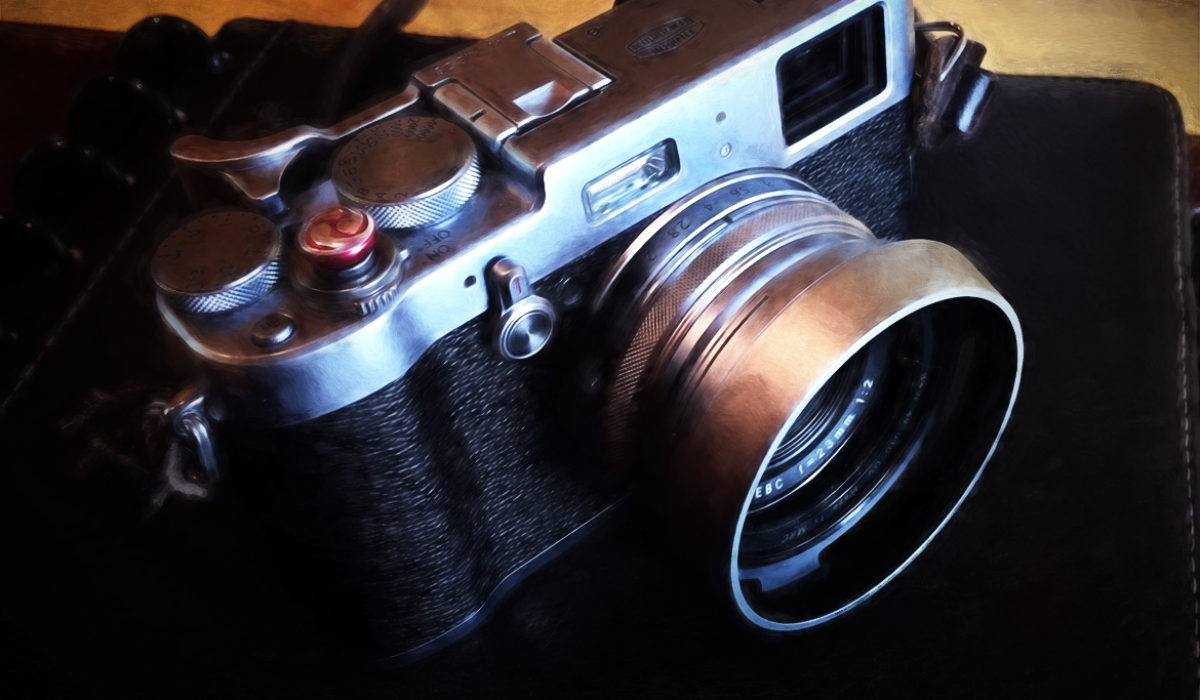When was the last time you just had FUN with your camera?
As photographers we tend to get so darn serious, obsessed with pristine focus, the perfect histogram, an immaculate RAW file.
I was the same way myself, until I got my hands on the Fuji X100T … and fell in love with photography all over again. And not just photography, but creative photography, harnessing the unique advantages in shooting mirrorless, and taking delight in what such a camera can accomplish if you push beyond your comfort zone and see what you can make happen.
More Things To Try With Your Mirrorless Camera:
— Stick to One Focal Length. Even if you have a mirrorless camera that allows you to swap out different lenses, get yourself a prime lens (35mm or 50mm) and give it a try. Spend a week “zooming with your feet.” Move around more and pay closer attention to your framing. Get into unexpected positions, capture images from unusual angles, move in real close. Work to find interesting and imaginative ways to compose your images. This will make you a better photographer, not just a more creative one.
— Look REEAL Close. Switch over to Macro mode and see what you can capture. You may need to switch to manual focus and even then move the camera nearer or further away while watching the LCD display or looking through the EVF. Try for some artistic abstract images. Or ultra-shallow-depth-of-field close-ups of objects we don’t normally think to photograph.
— Go Monochrome. Set your camera to monochrome and use the EVF to see the world in black and white while you are shooting. If you’ve never done this, it’s going to be a revelation. In my Creative Black and White Photo Artistry course I talk at length about all the many ways to create artistic conversions from color to black and white, but there’s something creatively liberating about actually SEEING the world in black and white while you capture your images. So try this for sure. Spend a whole week in black and white if you can. And if your camera allows it, try out the colored filter options, and see what kind of results you get when you tweak the highlight and shadow tone settings. Then be sure to also spend some time combining this with the next one …
— Go Real Dark (or Real Bright). Set the camera to manual mode and experiment with aperture, shutter speed, and ISO, deliberately under-exposing your scenes (or deliberately over-exposing them). Add an ND filter if necessary. See what you can create when you absolutely crush the blacks. See what happens when you nearly blow out the entire image. Being able to see the world shift in this way through the EVF is pretty awesome. Images like these can either be layered into compositions in Photoshop (where when blended they serve as lighting effects), or they could just be cool as they are.
— Blur It! Put your hyper-sharp habits aside, throw the camera into manual focus mode, and go create some cool blurred images. With the EVF you can see the world go blurry, so experiment with some images that are just-blurry-enough to still be recognizable … then experiment with pushing the blur even further, rendering it even more abstract. Once again, images like these can make for great blend layers in Photoshop, but you’re sure to come up with some great images that can stand on their own. Blur can be really, really cool.
— Capture Motion. One of the most exciting things about digital cameras is that you can capture an experimental image and see if it came out the way you wanted. Getting a feel for capturing images while panning your camera takes practice, and the immediate feedback is invaluable in getting your timing right. So try slowing your shutter speed down to about 1/15th of a second and try panning the camera to capture something in motion, or set up on a small tripod to capture something stationary while everything else moves around it.
— Get Shallow. This one you no doubt already know about. Set a wide aperture (f/1.4, f/1.7, f/2.0), focus on something near at hand, and let the background go all blurry. (The nearer you are to what you’re focusing on, the blurrier the background will be.) But experiment while looking through your EVF, getting a feel for where to place your focus to as to achieve the most interesting effects.
— Get Deep. Now go the other direction. Set a real tight aperture (like f/16), add an ND filter or two, put the camera on a tripod, and see what you can pull off with long exposures. Turn people (or moving water) into smoke! Capture light trails! Record the movement of clouds.
— Choose a Different Box. If you’re able to switch aspect ratios, try spending a whole week capturing images in a square box instead of the usual rectangle you’re used to. It’s surprising how creative this can feel.
— Use All the Stuff No One Else Uses. If you’re lucky enough to have film simulations available, try those (and try pushing them further with tweaks to any other available settings, like highlight and shadow tone, noise, sharpening, etc.) If you have any specialty modes (like “Toy Camera” or “Miniature”), try those out as well, look through your EVF, see the world that way, and see what you can create with them. And if your camera allows you to capture multiple exposures, definitely spend some time seeing what you can composite in-camera, experimenting with just how abstract you can go while preserving the reality of specific elements in the scene.
— Step Away From the Camera. If your camera allows for remote operation through an iPhone app, take advantage of this and dream up some imaginative self-portraits you might capture. Put the camera on a tripod, set its basic settings, and then take over control with your app as you get yourself into position. Get creative! You don’t have to mug for the camera. (You don’t even have to be looking at it. You could be almost entirely obscured or blurred out.) There’s no limit to the ideas you could try out this way or the creative images you could capture.
As you can see, you have a LOT of options you can be playing around with. Each of these in itself could keep you creatively busy for days, and just imagine if you were to combine some of them . . .
In the end, whether you are capturing creative images to carry over into Photoshop to turn into works of art, or you are simply capturing creative images for their own sake, I think you will find that pushing a mirrorless camera beyond the conventional will reinvigorate your love of pure photography.
Trust me. You will create some images unlike anything you have created before.
And I’m betting you will have a blast.
– Sebastian

